The Averted Disaster Award Opens Its Third Call for Recognizing Global Disaster Mitigation Successes
18 October 2023
Singapore – The Averted Disaster Award, dedicated to acknowledging successful disaster mitigation efforts worldwide, has officially launched its third call for nominations.
Every year, natural disasters wreak havoc, claiming lives, devastating communities, and imposing substantial economic costs on the global economy. Yet, behind the scenes, disaster risk professionals and organizations work tirelessly to mitigate these catastrophic events. While media coverage often focuses on disasters, it rarely sheds light on successes; the structures saved due to earthquake-resistant building codes, the wildfires averted through effective forest management, or the lives spared thanks to timely evacuations. Disaster risk management (DRM) often faces the paradox that its failures are highly visible, while its successes go unnoticed.
The Averted Disaster Award’s purpose is to spotlight achievements in DRM that often go unnoticed as a result of their success. Applications are welcome from individuals, project teams, and organizations of all sizes, across various regions and industries. The nominator does not need to have been directly involved in the intervention. Submission deadline is January 12, 2024.
Interventions take many forms. The most obvious interventions are structural in nature, such as sea-walls or reinforced bridges. Certain activities, such as controlled forest burns, count as interventions too, since they reduce future wildfire risk. Financial products that manage disaster risk, such as flood insurance schemes, count as interventions as well. Interventions can also occur at the individual or community scale, where, for example, placing sandbags to protect critical locations such as grocery stores or hospitals can ensure that the community as a whole can recover more quickly from flash floods. It is important to keep in mind that interventions are proactive and not reactive: interventions are generally pre-meditated and implemented before the disaster occurs.
The winning submission receives travel, accommodations and a complimentary ticket for one person to attend Understanding Risk 2024, in Tokyo Japan where the intervention will be announced as the winner and celebrated during a session. Understanding Risk is the world’s largest forum for perspectives and innovations in global DRM. Additionally, a documentary short film will be developed to showcase the intervention and featured prominently in ADA media and communications content.
The Averted Disaster Award Selection Committee is composed of thought leaders and practitioners in the field of DRM. Selection Committee members apply their expertise without bias to review applications and collaborate to determine the shortlist of finalists and winner of the ADA prize. Selection Committee members include: Shanna N. Mcclain. PHD (NASA, Disasters Program Manager), David Lallemant. PHD (Head of Disaster Analytics for Society Lab at Nanyang Technological University and the Earth Observatory of Singapore), Stéphane Hallegatte (Senior Climate Change Adviser at World Bank), and Dr. Olivia Jensen (Lead Scientist, LRF Institute for the Public Understanding of Risk, National University of Singapore).
Judges assess each application against the following criteria: 1) level of impact of the disaster averted, 2) quality of evidence based results, 3) potential to replicate adapt and scale, 4) levels of inclusivity, equity and focus on the most vulnerable, 5) narrative clarity and contribution to understanding risk and risk mitigation. The panel considers all case summaries submitted by the deadline, and choose the one that makes the best case for an effective disaster mitigation intervention.
To date, two organizations have received the Averted Disaster Award. In 2022, the Bangladesh Red Crescent Society was honored for its work implementing a forecast-based financing framework for vulnerable communities in Bangladesh during successive climatic events from May-July 2020. Recently, in October, The Amrita Center for Wireless Networks and Applications earned recognition for its work integrating landslide early warning technology and engaging communities for emergency preparedness and resilience in the Himalayas & Western Ghats regions of India.
The ADA has also recognized the efforts of other organizations worldwide, including Aga Khan Agency for Habitat (Pakistan), Build Change (Philippines), University of the Philippines Resilience Institute for their Project NOAH, GeoHazards International for their project Landslide Safety Action Plan (India), BBC Media (Kenya), and Prepared International (Jordan, Israel, and Palestine). In the two years of ADA’s existence, nominations have been received for projects from all regions of the world. To discover some of these successful interventions, click here.
About the Averted Disaster Award
The Averted Disaster Award recognizes proactive interventions implemented around the world that help ensure that communities continue to function, thrive, and recover quickly in the face of disaster risk. The Averted Disaster Award is an initiative of the Understanding Risk community and is supported by the Global Facility for Disaster Reduction and Recovery (GFDRR).
For more information concerning the ADA, or if you or your company is interested in supporting the Averted Disaster Award, please contact info@averteddisasteraward.org

Averted Disaster Award 2023
Winner
Amrita Center for Wireless Networks & Applications
Revolutionizing Disaster Management: Empowering Communities and Saving Lives through Technological Interventions
In recent years, India has been grappling with an escalating frequency of natural disasters, and among these, landslides have emerged as a particularly impactful threat. The Himalayan and Western Ghats regions in the country are especially vulnerable to landslides, leading to numerous casualties each year. To address this pressing challenge, Amrita Vishwa Vidyapeetham, India, has pioneered a ground-breaking solution – AI-enabled Internet of Things (IoT) Landslide Early Warning System (Amrita-LEWS).

Landslides triggered by factors such as extreme rainfall, improper drainage, and human development activities have wreaked havoc on regions like Munnar in the southern state of Kerala. For years 2018 through 2022, the Munnar community has faced perilous situations during the monsoon season, jeopardizing their lives, livelihoods, and security. To combat this, Amrita Vishwa Vidyapeetham introduced the Amrita-LEWS, an innovative system consisting of more than 150 sensors strategically placed underground, ranging from the surface level to bedrock.
This system is a sophisticated amalgamation of AI, IoT, and data analytics. It continuously monitors an array of parameters – from rainfall, seismic actions, and moisture levels to pore pressure, vibrations, and inclinations. The collected data is then analyzed to predict the onset of landslides with impressive accuracy.
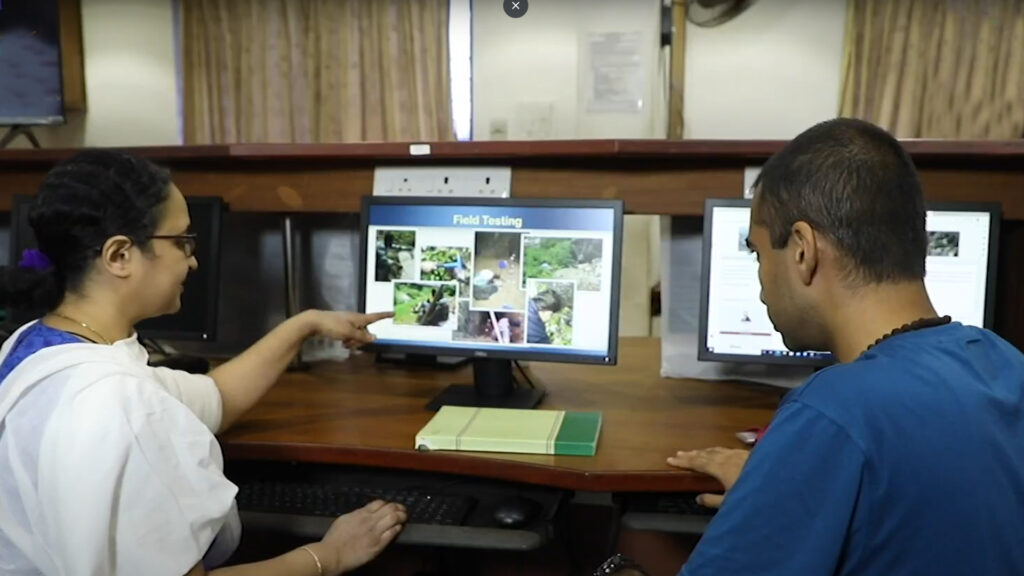
Notably, the system incorporates AI and machine learning techniques to forecast landslides with a lead time of 3 to 24 hours, thus providing a crucial window for evacuation and disaster preparedness.
What sets the Amrita-LEWS apart is its ability to monitor various types of parameters and offer multi-scale warnings for different types of landslides. By seamlessly integrating meteorological, geological, and hydrological data through an IoT framework, the system delivers timely and reliable early warnings. The technology has been rigorously tested, validated, and refined through real-world deployments, ensuring its effectiveness.
A more advanced iteration of this system has been operational in Chandmari, Sikkim, since 2018. Covering over 32 hectares, this extended version employs an array of geotechnical and geophysical sensors to monitor factors like moisture levels, pore water pressure, ground vibrations, tilting, and strain. Weather stations equipped with environmental sensors keep track of rainfall, temperature, humidity, solar radiation, wind speed, and atmospheric pressure. The real-time data from these sensors is transmitted to Amrita’s Control Center, where it undergoes detailed analysis to generate accurate predictions and facilitate informed decision-making.
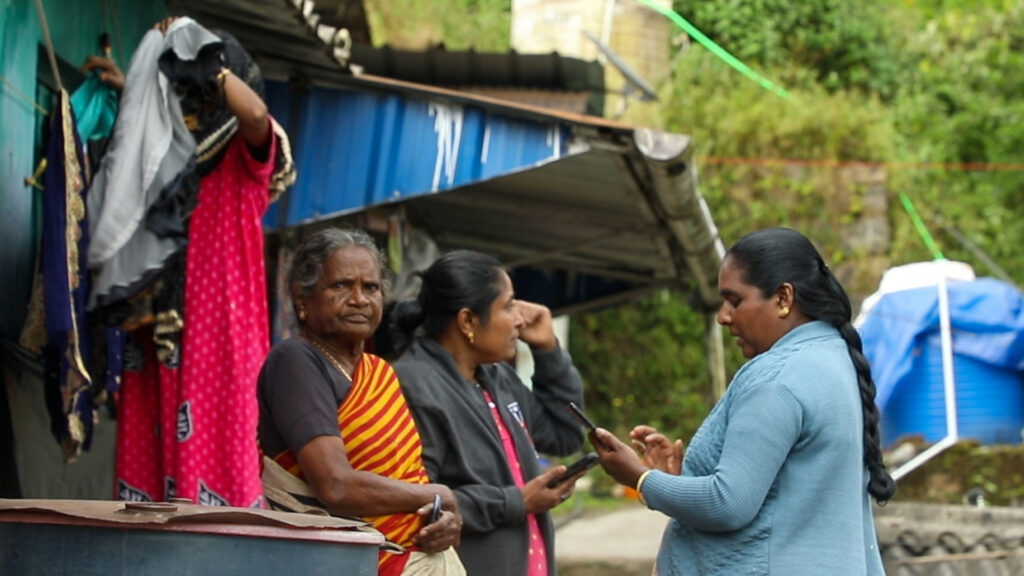
This technological marvel hasn’t just remained confined to laboratories – it has proven its mettle in the field. Amrita’s IoT system has successfully issued early warnings for landslides on numerous occasions, including critical instances like July 2009, August 2011, August 2013, and more recently, in July and August of 2018, 2019, 2020, 2021, 2022 and 2023. These timely alerts have played a pivotal role in safeguarding the lives and properties of the Munnar community.
Two striking examples highlight the system’s effectiveness: In August 2020 and August 2022, regional landslide warnings were issued for the Western Ghats, specifically Munnar. In both instances, devastating landslides occurred within a mere 20 kilometers of the deployment sites shortly after the warnings. These incidents stand as testament to the reliability and accuracy of Amrita’s early warning system.
Yet, Amrita’s commitment to disaster management goes beyond technology. The institution is deeply engaged in fostering community resilience through comprehensive programs. Initiatives like the Landslide Tracker, a collaborative mobile app, and the Amrita Kripa app for real-time disaster management underscore their dedication to involving the community. Additionally, Social Media Mining Platform focuses on harnessing social media data for swift and inclusive multi-hazard event detection, aiding rescue and relief operations.
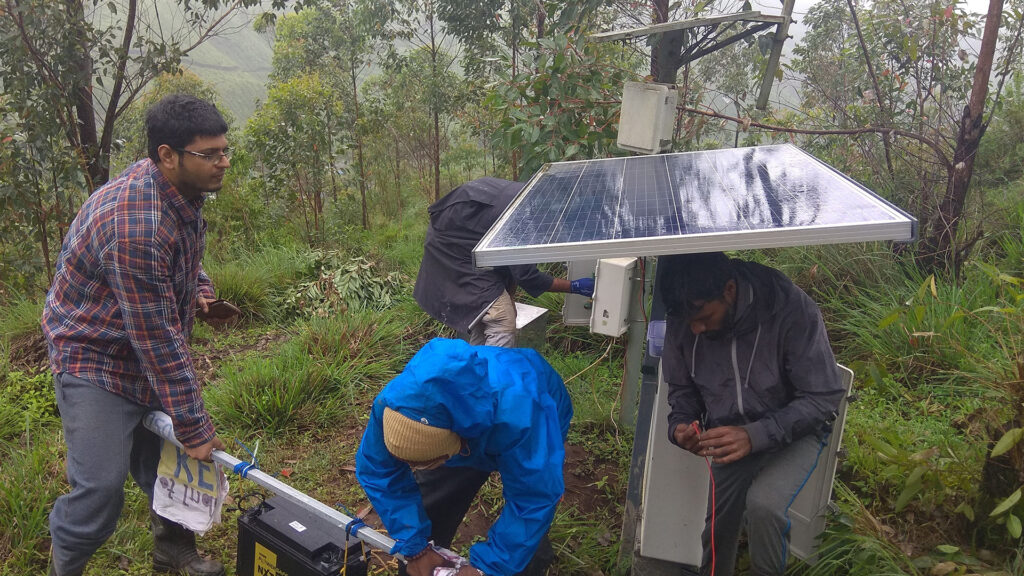
By intertwining technological prowess with community empowerment, Amrita Vishwa Vidyapeetham is revolutionizing disaster preparedness and mitigation. Through a decade-long journey of research, development, deployment, and operation, their AI- and IoT-driven systems have proven instrumental in not just saving lives, but also making communities self-reliant and resilient in the face of natural disasters. The experiences gleaned from real-world deployments in both the Western Ghats and the North-east Himalayas stand as a testament to the transformative power of technology when combined with a vision for societal betterment.

Averted Disaster Award 2023
Runner Up
Aga Khan Agency for Habitat, Pakistan
Fighting Avalanche Risk in the High Mountains of Pakistan
Background
The northern regions of Pakistan, Gilgit-Baltistan and Chitral (GBC), home to some of the world’s largest mountain ranges including the Hindu Kush, the Himalayas and the Karakorum. These regions are characterised by rough and rugged terrain. Over 2 million people living in narrow gorges, foothills and steep terrains, face multiple natural hazards. Winters are long, harsh and isolating with heavy snowfall. According to news reports, only this year, some villages/valleys remained cut off from the rest of the country for more than 15 days (Nagri, 2023). The northern mountainous regions of Pakistan experience heavy snowfall and regularly witness snow avalanches during the winter and spring seasons (Gurung et al., 2023). As such these natural hazards pose a constant threat to human life, property, and critical infrastructure in these high-altitude mountain communities of GBC.
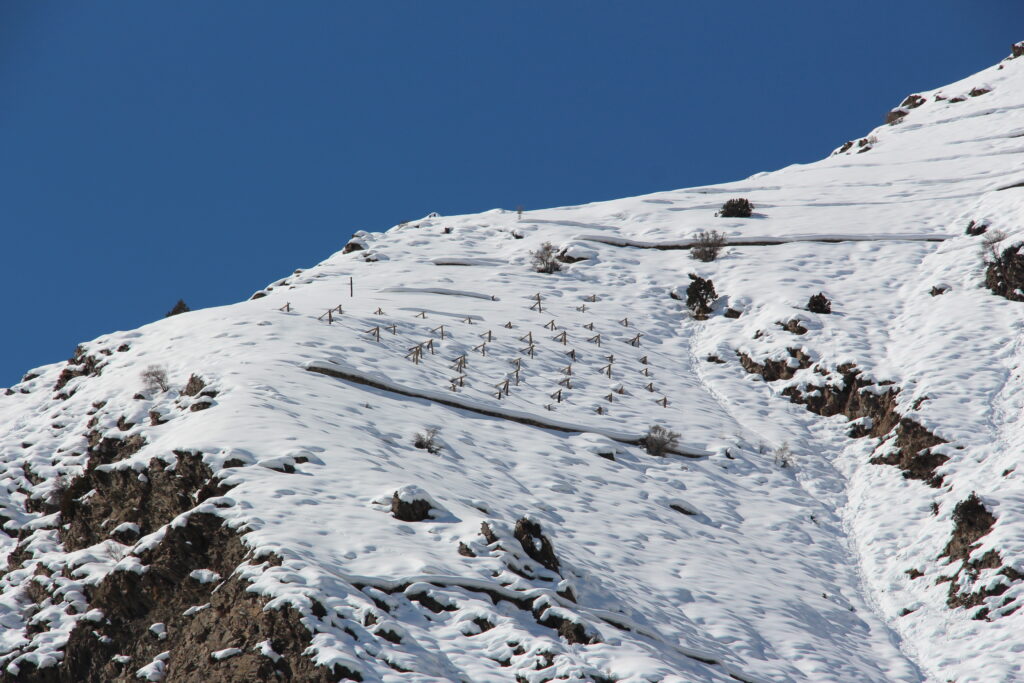
The Aga Khan Agency for Habitat, Pakistan, an agency of the Aga Khan Development Network, works with these communities to reduce disaster risk and adapt to climate change. Since 1992 AKAH has recorded more than 350 avalanche events in parts of GBC, resulting in the tragic loss of over 310 lives and causing numerous injuries. These avalanches have also left a trail of destruction, demolishing hundreds of houses, link roads, and critical infrastructure.

Averting Avalanche Risks
To identify, understand and address this natural hazard, AKAHP’s technical experts conducted extensive Hazard Vulnerability & Risk Assessments (HVRA) of villages and towns across GBC. The assessment data reveals that over 250 villages across only four out of 12 districts of GBC are exposed to immediate avalanche risks. Alarmingly, more than 1,100 households are at direct risk from these avalanches. While it may not be possible to stop avalanche events, AKAHP has pioneered a community-driven approach to help minimize these risks.

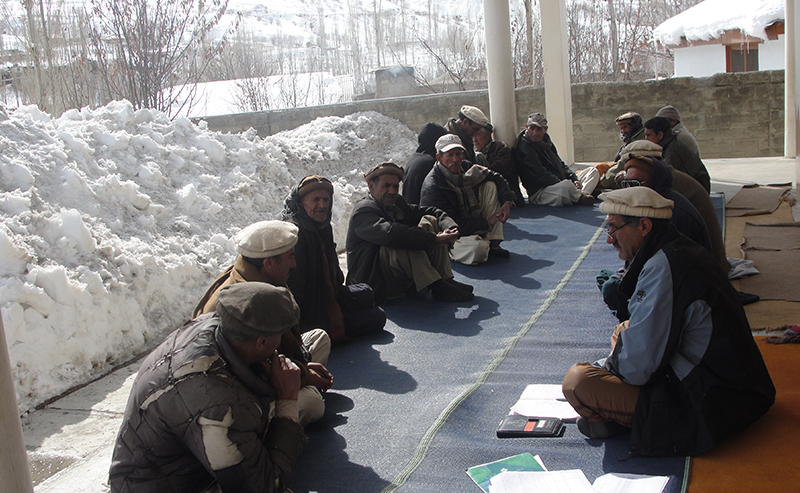
AKAHP Winter Preparedness and Avalanche Readiness Programme (WPRAP)
WPARP is a key aspect of AKAH’s Disaster Risk Reduction (DRR) and mitigation framework. AKAH Pakistan started its snow avalanche-related interventions in 2012, initially focusing on 10 villages that were extremely vulnerable to snow avalanches. With the increasing frequency of snow avalanche disasters in the region, this project has been expanded to over 250 villages across GBC.
This seasonal preparedness programme is designed to monitor risks, generate early warnings and create awareness and develop community capacities (Nasab, 2021). As such, community-level response plans are developed to cater to avalanche incidents. Since the sustainability of this programme hinges on local actors, AKAHP has created and capacitated teams of trained village-level volunteers i.e., Community Emergency Response Team (CERT) to educate the local communities and to improve preparedness.
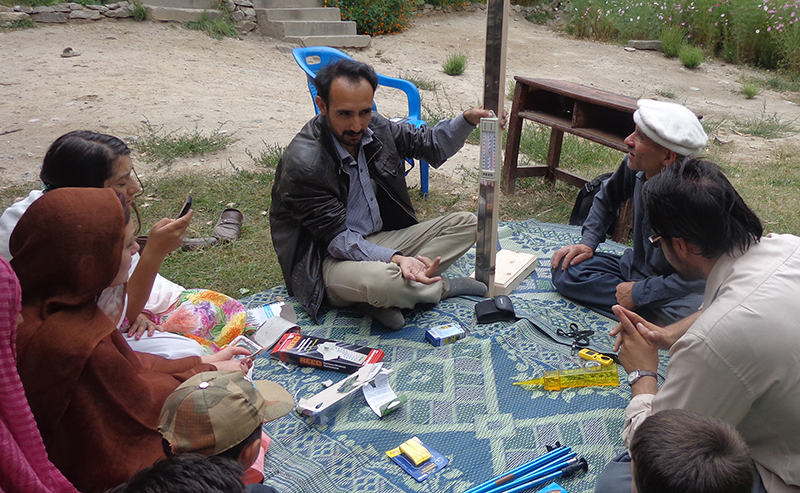

In addition to localized face-to-face training and awareness sessions, AKAH Pakistan has developed educational material like pamphlets, brochures, road signs and interactive videos (such as the one on the left) to educate communities about the key steps that one can take to protect themselves and their community from the threat of avalanches.
Localised Weather Forecasting
Remote mountain communities in Gilgit Baltistan and Chitral (GBC) lack accurate and timely weather forecasting and early warning systems. To fill this gap AKAH has established community-based Weather Monitoring Posts (WMPs), in 53 critical locations in remote valleys where avalanches pose a severe threat to human settlements. WMP volunteers trained by AKAH collect and report daily weather data on temperature, snowfall, wind, rain and more, as well as any data on avalanches that occurred.
AKAHP experts analyse this data and provide avalanche forecasts and alerts which are disseminated to communities by AKAHP’s through the local structures created as part of the disaster risk reduction framework.
AKAH’s winter preparedness programme promotes a community-based approach to disaster risk management. Training local volunteers to monitor daily weather and in em ergency response in at-risk villages has improved awareness, preparedness and trust of the community and reduced the challenges related to timely communication and evacuation. As the case of Ucho Gole in Chitral district shows, these efforts have helped save lives and build self-reliance.
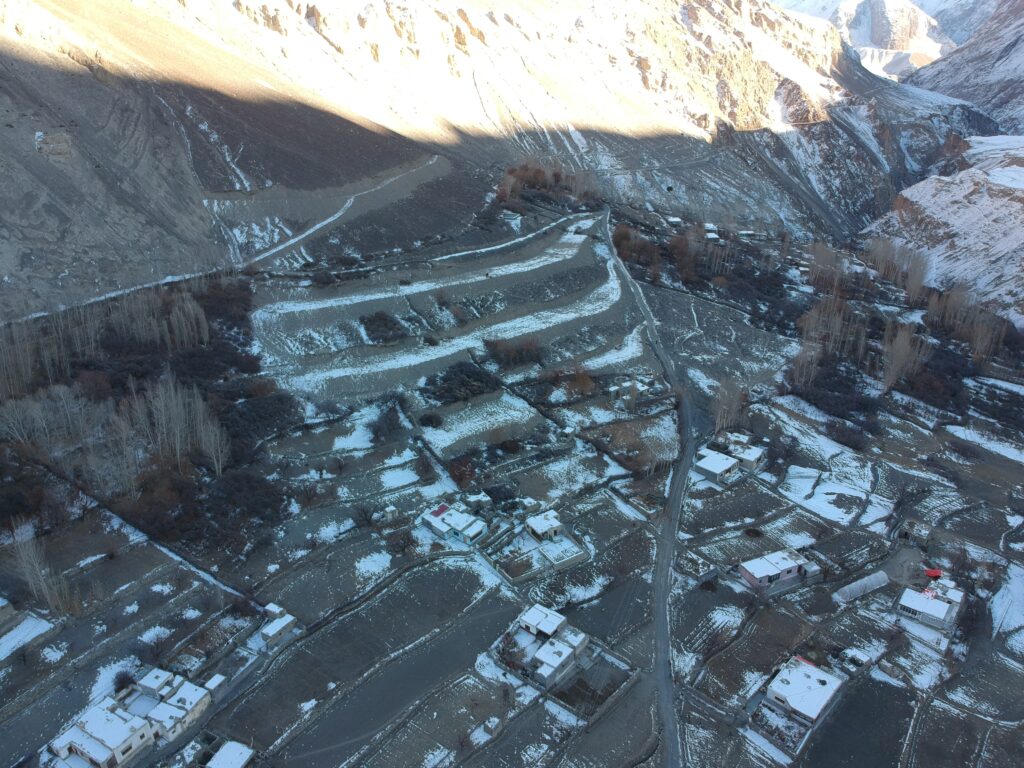
The Story of UCHO GOLE
On 4th January 2016 in Ucho Gole, a village in Lower Chitral, the local weather monitoring and community emergency response volunteers received an avalanche alert from AKAH. One volunteer in the village rushed to disseminate the alert to 12 families who were living in the avalanche risk zone. Out of these 12, two (02) houses were in the extreme risk zone. When the volunteer reached one of the houses, the family was entertaining some guests who had come to visit them, having no idea about the looming danger. In the mountainous region, hospitality is elaborate and when the volunteer arrived, the family also offered him a hot cup of tea. Knowing the level of the imminent threat, sacrificing politeness, he refused the offer and convinced the family members and their guests to leave at once and evacuate to a safer location. Though they resisted initially, he was able to convince them to evacuate to safe place nearby just in time before an avalanche came down and destroyed their homes completely. Luckily, all of the family members, their guests and the volunteer (17 people) were saved and there was no regret in refusing tea.
Conclusion
AKAH’s winter preparedness programme has helped in saving lives through improving community preparedness It has also strengthened coordination among disaster management authorities including provincial disaster management, and voluntary bodies. Whenever an avalanche occurs, AKAH’s Search and Rescue Team (SART) volunteers, mobilise with local authorities and Rescue 1122 as first responders.
By community involvement and prioritizing the safety and well-being of those living in these vulnerable areas, we can make significant contributions towards reducing the risk and impact of avalanches in Pakistan’s mountainous regions.
Protecting mountainous communities from deadly avalanches requires a proactive approach that emphasizes timely, effective emergency response and long-term resilience-building initiatives, empowering communities with the knowledge and capacities to prepare, protect and recover from disaster.
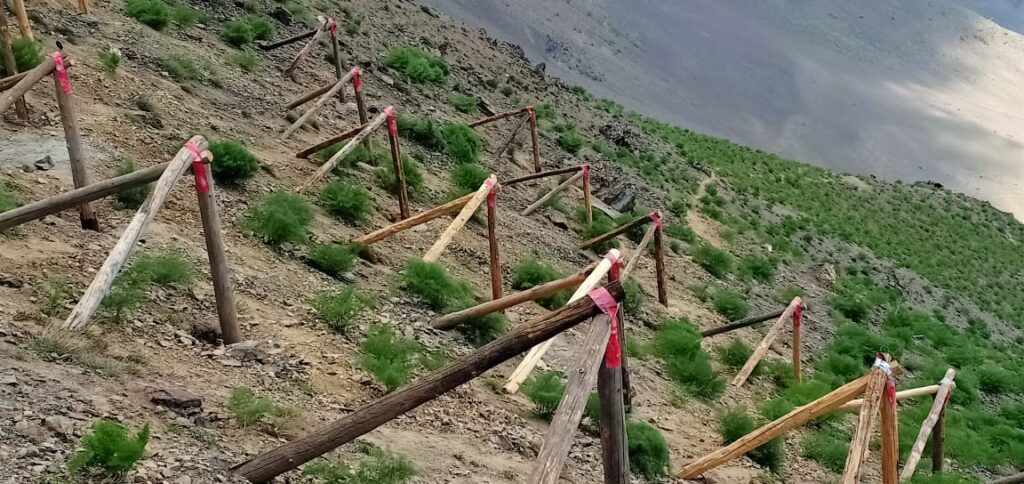
Contributor:
Mehar Aftab, Communication Coordinator, Aga Khan Agency for Habitat Pakistan
Syed Gohar Ali Shah, Manager, Partnerships, Aga Khan Agency for Habitat Pakistan
Sher Wali, Manager, Risk Anticipation, Aga Khan Agency for Habitat Pakistan
Avalache terracing at the trigger point at Khishwakht Washich, Upper Chitral
Wooden tripods installed at the avalachne triggering point in Kishwakhat, Washich, Upper Chitral
References
Gurung, D. R., Saratbekova, R., Sahim, S. A., Walizada, K. M., Wali, S., Karim, D., Dobariya, R., & Nasab, N. (2023). Community Resilience Through Local Action: AKAH’s Winter Preparedness and Avalanche Readiness Programme. In Springer eBooks (pp. 345–363). https://doi.org/10.1007/978-3-031-24541-1_16
Nagri, J. (2023, February 24). Snowfall, avalanches cut off GB, Chitral villages. DAWN.COM. https://www.dawn.com/news/1738837
Nasab, N. (2021, May 25). The Winter Preparedness and Avalanche Readiness Programme, a comprehensive avalanche preparedness plan in Afghanistan, Pakistan and Tajikistan. Adaptation at Altitude. Retrieved June 24, 2023, from https://adaptationataltitude.org/solutions-portal/the-winter-preparedness-and-avalanche-readiness-programme-a-comprehensive-avalanche-preparedness-plan-in-afghanistan-pakistan-and-tajikistan#:~:text=The%20Winter%20Preparedness%20and%20Avalanche%20Readiness%20Programme%20is%20a%20comprehensive,in%20Afghanistan%2C%20Pakistan%20and%20Tajikistan.